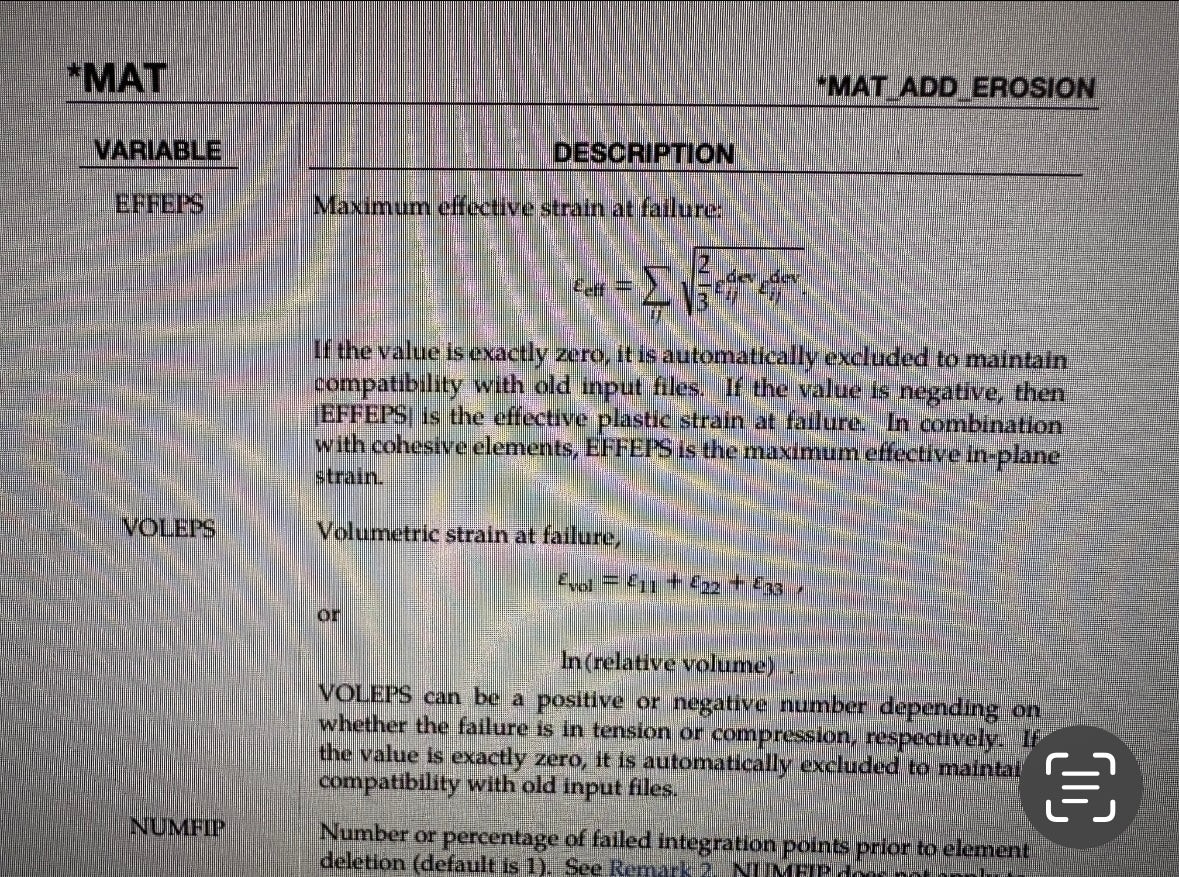TAGGED: erosion
-
-
January 26, 2024 at 6:14 am
-
January 26, 2024 at 2:30 pm
Armin
Ansys EmployeeHi Okkar,
The effective plastic strain derived from the equation in your picture is always a positive value (check also this article: https://ftp.lstc.com/anonymous/outgoing/support/FAQ/effective_plastic_strain#:~:text=Characteristics%20of%20effective%20plastic%20strain,is%20on%20the%20yield%20surface.)
However, to enable the failure criterion at particular effective plastic strain, you can input this value into the *MAT_ADD_EROSION card as a negative number for the EFFEPS variable and the model will consider it's magnitude or |EFFEPS| as the effective plastic strain at failure.
-
January 27, 2024 at 6:27 pm
-
January 27, 2024 at 6:30 pm
Okkar Kyaw
SubscriberPlease check the blue zone
-
-
January 29, 2024 at 4:04 pm
Armin
Ansys EmployeeThanks Okkar for sharing this. That's interesting because to my understanding, the effective plastic strain is always non-negative which may indicate numerical problems here.
Could you mention what this material is? As a general observation, plastic strain in the range of 1e-3 displayed in your picture is pretty small and might be close to the onset of yielding of the material. As a reference, fracture strain of ductile materials is at least two order of magnitude larger than this value.
-
January 29, 2024 at 10:10 pm
Okkar Kyaw
SubscriberHello the material is ceramics and i am trying to simulate with a very small fracture strain here. It is not a ductile material.
-
January 29, 2024 at 10:58 pm
Armin
Ansys EmployeeI see... I don't have much experience with fracture of brittle materials, but I think you can consider a stress-based approach for fracture (instead of strain-based) by setting the SIGP1 or SIGVM in the MAD_ADD_EROSION card to the desired fracture stress.
-
-
- The topic ‘Effective plastic strain (Tension region)’ is closed to new replies.



-
4607
-
1510
-
1386
-
1209
-
1021

© 2025 Copyright ANSYS, Inc. All rights reserved.









